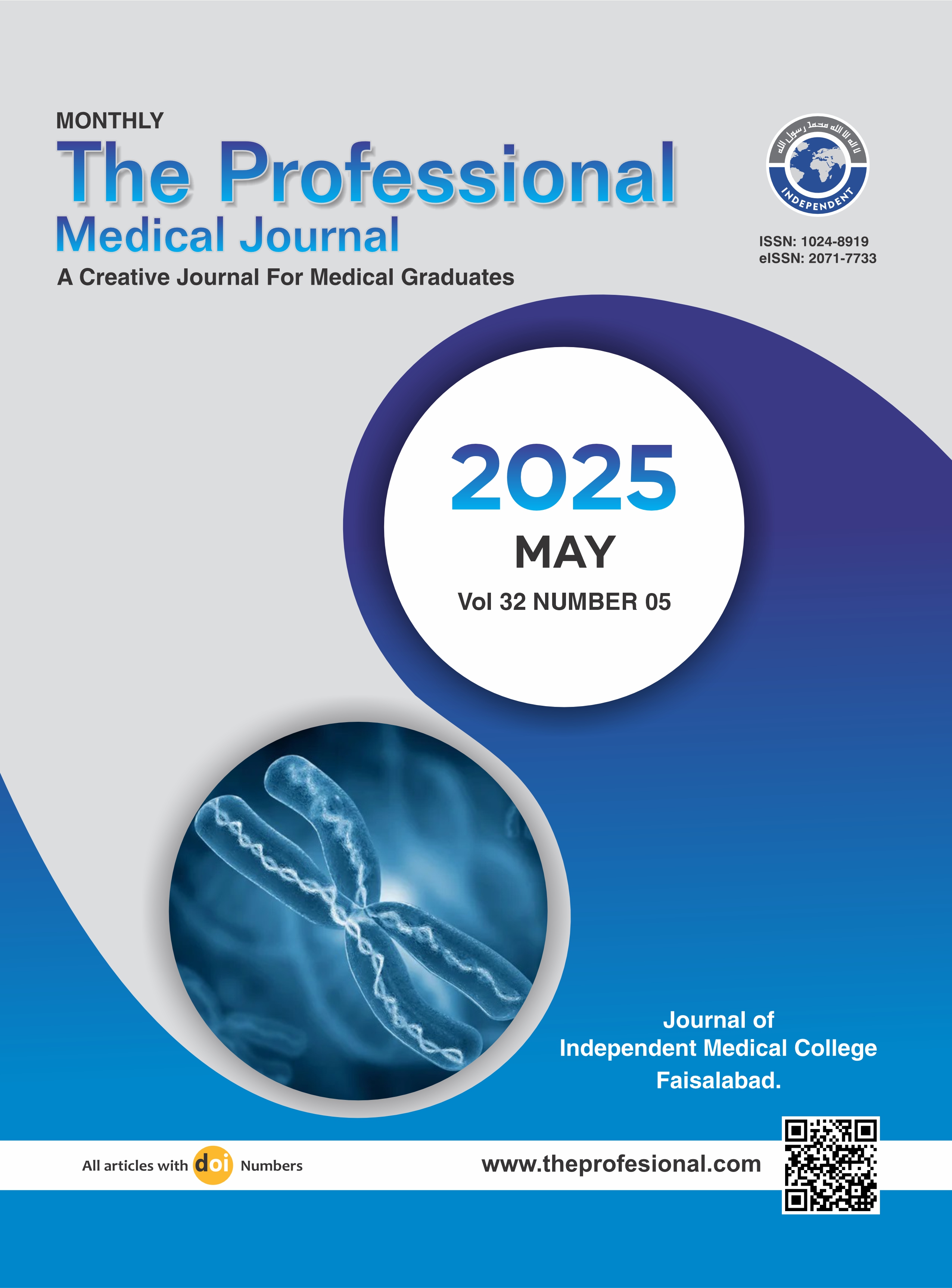Comparison of ultrasound guided intraarticular shoulder injection and suprascapular nerve block versus ultrasound guided intraarticular shoulder injection in pain management of frozen shoulder patients.
DOI:
https://doi.org/10.29309/TPMJ/2025.32.05.8836Keywords:
Active Range of Motion, Flexion, Group Comparison, Intervention, Passive Range of Motion, Rehabilitation, Shoulder SurgeryAbstract
Objective: To compare ultrasound guided intraarticular shoulder injection and suprascapular nerve block versus ultrasound guided intraarticular shoulder injection in pain management of frozen shoulder patients. Study Design: Quasi Experimental study. Setting: Department of Anesthesia and Pain Medicine, Shaikh Zayed Hospital, Lahore. Period: Sep 2023 to Feb 2024. Methods: Patients aged 18 years and above presenting with symptoms consistent with frozen shoulder, confirmed through clinical evaluation and imaging studies. Patients with history of shoulder surgery, concomitant shoulder pathology were excluded. Participants were allocated to two groups: Group A received ultrasound-guided intraarticular shoulder injections, while Group B underwent a combination of ultrasound-guided intraarticular shoulder injections and suprascapular nerve blocks. The primary outcome measure was pain intensity assessed using the Visual Analog Scale (VAS) at baseline and follow-up intervals (2nd day, 1st week, 2nd week, and 4th week post-intervention). Secondary outcome measures included passive and active range of motion (ROM) of the shoulder joint assessed using a goniometer at corresponding time points. Collected data were processed and analyzed using IBM SPSS, version 27.0. Results: Mean age of patients in Group A was 50.04 ± 12.45 years and that of Group B was 50.60 ± 11.64 years with majority of them being females in both groups. Mean duration of the condition was 3.65 ± 1.08 months and 3.36 ± 1.31 months in Group A and B, respectively. At the time of enrollment into the study, the mean VAS score in Group-A was 7.20 ± 1.12 and in Group-B was 7.12 ± 0.93 without any statistical difference (p=0.784). On the 2nd day, Group A exhibited a significantly lower mean VAS score compared to Group B (p = 0.004). Statistically significant improvement in active as well as passive ROM was recorded following intervention in both the groups. This improvement was observed in all directions of motion. At first follow-up (2nd day) following intervention the improvement in passive and active abduction, flexion and extension were comparable in the two groups (p>0.05). Conclusion: In conclusion, our study highlights the significant advantage of Group A over Group B in achieving greater passive range of motion post-surgery, particularly evident in abduction, flexion, extension, internal rotation, and external rotation. These findings emphasize the potential benefits of tailored rehabilitation protocols in optimizing functional outcomes following shoulder surgery.
Downloads
Published
Issue
Section
License
Copyright (c) 2025 The Professional Medical Journal

This work is licensed under a Creative Commons Attribution-NonCommercial 4.0 International License.


